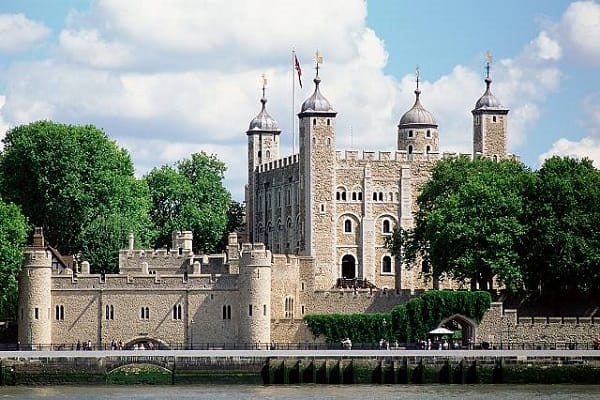London, a city dripping in history and culture has some of the most amazing buildings in the world. From ancient to modern skyscrapers the skyline is a mix of history and design. This guide covers London’s most iconic buildings, what’s their history, design and why you need to visit.
The Tower of London: A castle of history
The Tower of London is one of the city’s most famous landmarks. Built by William the Conqueror in 1066 this iconic castle has been a royal palace, prison, armory and treasury. The White Tower with its Norman architecture is a symbol of England’s turbulent past.
You can explore the medieval towers, see the Crown Jewels inside and hear about famous prisoners like Anne Boleyn. Its design, with defensive battlements, thick stone walls and imposing turrets is medieval engineering at its best.
Westminster Abbey: A Symbol of Power and Faith
No London architectural tour is complete without visiting Westminster Abbey. This UNESCO World Heritage site has been the location of royal coronations, weddings and funerals for over a thousand years.
Built in the Gothic style the abbey is famous for its stone carvings, vaulted ceilings and stained glass windows. The fan-vaulted Henry VII Chapel and Poets’ Corner where literary giants like Charles Dickens and Geoffrey Chaucer are commemorated is all part of its historic charm.
Booking? Book your westminster abbey tickets online to skip the queues and fully appreciate this piece of religious and architectural history.
St. Paul’s Cathedral: A Baroque Beauty
St. Paul’s Cathedral designed by Sir Christopher Wren after the Great Fire of London in 1666 is a Baroque masterpiece. Its dome is iconic and dominates the London skyline and is a symbol of the city’s strength.
The interior is just as impressive with mosaics, marble walls and the Whispering Gallery where even the quietest whisper can be heard across the vast dome. The crypt beneath the cathedral has the tombs of famous people like Admiral Nelson and the Duke of Wellington.
You can climb to the Golden Gallery for views of London and St. Paul’s is a favourite among architecture enthusiasts and photographers.
The Houses of Parliament and Big Ben
The Houses of Parliament, officially the Palace of Westminster, is a neo-Gothic masterpiece designed by Charles Barry and Augustus Pugin. Completed in the mid 19th century after a fire it has an intricate facade, spires and courtyards that showcase Victorian Gothic at its best.
Next to the parliament buildings is the famous Big Ben, officially the Elizabeth Tower. Its clock face and chimes are global symbols of London. The precision of its clock mechanism and the stonework of the tower is a combination of craftsmanship and engineering.
Tower Bridge: Engineering Beauty
Often confused with London Bridge, Tower Bridge is a Victorian masterpiece. Opened in 1894 it combines bascule (moving) bridge technology with two neo-Gothic towers connected by a pedestrian walkway.
The high-level glass floor walkway offers views of the River Thames and surrounding landmarks. The hydraulic system that used to be powered by steam is now electric and is a perfect blend of old and new.
The Shard
For some modern architecture The Shard is London’s tallest building. Designed by Renzo Piano this glass tower rises 310 metres into the sky and is a symbol of London’s future.
The Shard’s design inspired by church spires has sharp pointed ends that reflect the light throughout the day. Inside it has luxury apartments, offices, restaurants and a public viewing gallery with views of the city.
Its sustainable design with energy efficient systems and integrated green technologies shows London’s commitment to environmental responsibility in urban development.
The British Museum: Neoclassical Magnificence
Founded in 1753 the British Museum is a cultural and architectural icon. Its grand neoclassical facade designed by Sir Robert Smirke is influenced by classical Greek and Roman architecture.
But its most impressive architectural feature is the Great Court added in 2000 by Sir Norman Foster. This glass roofed courtyard surrounds the museum’s central Reading Room and creates a dramatic and light filled space that combines old and new.
Inside you can explore vast collections of ancient civilisations from the Rosetta Stone to Egyptian mummies and it’s a global heritage hub.
Buckingham Palace: Royal Luxury
Buckingham Palace is the official residence of the British monarch and a symbol of royal splendour. Originally a townhouse in 1703 it was expanded over the centuries into the palace it is today.
The palace’s grand facade designed by Edward Blore and later remodelled by Sir Aston Webb has neoclassical features such as columns, a central balcony and an imposing entrance.
You can watch the Changing of the Guard outside the gates or tour the lavishly decorated State Rooms that are open to the public in the summer months.
Southbank Centre: Cultural Revolution
The Southbank Centre is a complex of arts venues and a showcase for modernist architecture post war reconstruction. Its concrete façade and geometric shapes are a classic example of Brutalist architecture.
The Royal Festival Hall part of the complex is a major cultural hub with music, theatre and exhibitions. Its riverside location on the Thames makes it a popular spot for art lovers and architecture enthusiasts.
The Natural History Museum: Gothic Revival
The Natural History Museum is another London landmark. Its facade has terracotta tiles, Romanesque arches and carvings of flora and fauna. Designed by Alfred Waterhouse the interior is just as impressive with the grand central hall housing the giant blue whale skeleton.
Conclusion
London’s architecture is a mix of old and new. From medieval fortresses to modern skyscrapers the city’s landmarks reflect its cultural heritage and its innovative spirit. Visit these architectural wonders and get to know London better where tradition meets progress in style. Add these to your next trip and see the city’s architectural magic for yourself.








